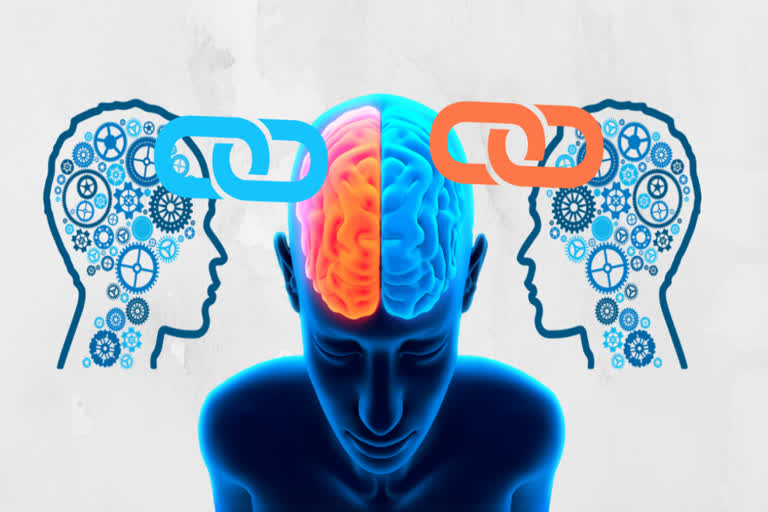New Scientist, UK: IMAGINE if your 6-year-old son needed surgery to remove a staggering half of his brain. That was what faced Matthew, a boy with a rare condition triggering many epileptic seizures a day and that could only be treated with this drastic surgery. When he woke up afterwards, he was incontinent and couldn't walk or speak.
Yet with daily physical and language therapy, Matthew regained these abilities.
In three months, he was almost back to normal, minus the seizures. Now an adult, brain scans show half of Matthew's skull as a black void, yet the only visible effects are his slight limp and a little clumsiness in his right hand.
How could someone lose half of their brain and recover almost all of their functioning in three months? For neuroscientist David Eagleman at Stanford University in California, this demonstrates one of the brain's most remarkable qualities: neuroplasticity, or the ability to remake itself in response to changing circumstances.
In Livewired, Eagleman explains why this ability is so fundamental to who we are that James Watson and Francis Crick's claim to have discovered the "secret of life" with their work on DNA is only half of the story.
The rest of what makes you who you are is "every bit of experience you have with the world: the textures and tastes, the caresses and car accidents, the languages and love stories... all of which sculpt the vast, microscopic tapestry of your brain cells and their connections," he writes.
In extreme cases, this brain resculpting is visible at the anatomical level through post-mortems or scans. Professional musicians develop a small bulge on a ridge of their motor cortex – a part of the brain that controls movement – revealing the effects of thousands of hours moving their fingers in complex choreographies. It is reminiscent of the way a large bicep may reflect the hours spent at the gym.
Research on animals shows that such a cortical bulge arises from rewiring at multiple levels. Not only is there the growth of new synapses (connections between brain cells) but there are also changes to the molecular machinery of those synapses. Neurons can sprout more branches, and sometimes whole new neurons can form.
Obviously, since we can't dissect the brains of living people, it is very hard to observe those transformations at the molecular and cellular level. Yet we can clearly see their effects on behaviour and abilities. It is why we are able to learn new skills, even in later life, and why some people who are blind can learn to echolocate in a similar way to bats.
DNA is only half of what makes you who you are – the rest is all the experience you have with the world
Brain scans show that in people who lose their sight, the part of the brain that usually receives signals from the eyes instead starts processing input from their ears and their sense of touch. This starts to happen even in people who are blindfolded for a few days.
Eagleman and his team are exploiting this flexibility by making devices that let people receive sensory information in new ways. They have built special vests and wristbands for people who are deaf. These capture sounds and translate them into vibrations through pads next to the skin. Eagleman envisages that, one day, such devices may not only replace lost senses, but also create new ones. For instance, a politician giving a speech could use a vest to monitor its reception on Twitter and dial it up or down accordingly.
The nervous system seems to accept such tinkering surprisingly quickly. Eagleman has a good example: can you guess how long it takes people to get used to manipulating three arms in virtual reality, with the third sprouting from the middle of their chest? Just 3 minutes.
Yet neuroplasticity has its limits. As we get older, our brains become less flexible and more stable. Older people can still learn a language or musical instrument, but the operation experienced by Matthew would be disastrous – it isn't generally recommended for children aged 8 or older.
A less-plastic brain might sound bad, but as Eagleman writes: "If plasticity didn't decline, you would not lock down the conventions of the world. Preserving total flexibility would retain the helplessness of an infant."
Prematurely locking down those conventions may explain the phenomenon of synaesthesia, in which people have fixed associations between unrelated stimuli – for instance, the letter "A" may always seem blue to some.
Eagleman believes synaesthesia stems from the early formation of memories that are too stable. For instance, he thinks alphabet-colour associations, a common form of the condition, may sometimes occur because someone can't forget the colours of the first letters they learned as a child.
In a study of more than 6500 synaesthetes, Eagleman and his team found that the letter-colour pairings are usually random, but for 15 per cent of people who were young children in the 1970s and 1980s, they follow a telltale pattern: A is red, B is orange, C is yellow, D is green, E is blue, F is purple and then the cycle repeats through the alphabet. This just happens to be the pattern of a Fisher Price alphabet magnet set that was popular in that period.
It is unclear how he extends his idea to explain less common forms of synaesthesia, like the association of sounds with colours, but the idea seems plausible for letter-colour pairings.
However, most of the book isn't about Eagleman's research, but is a broader overview of this important field of neuroscience. I finished Livewired feeling that I had learned a lot about the brain, without it ever being too dry or academic. Eagleman brings the subject to life in a way I haven't seen other writers achieve before.
(c) 2020 New Scientist Ltd.
Distributed by Tribune Content Agency, LLC
Also Read: How are sea levels measured over time?



